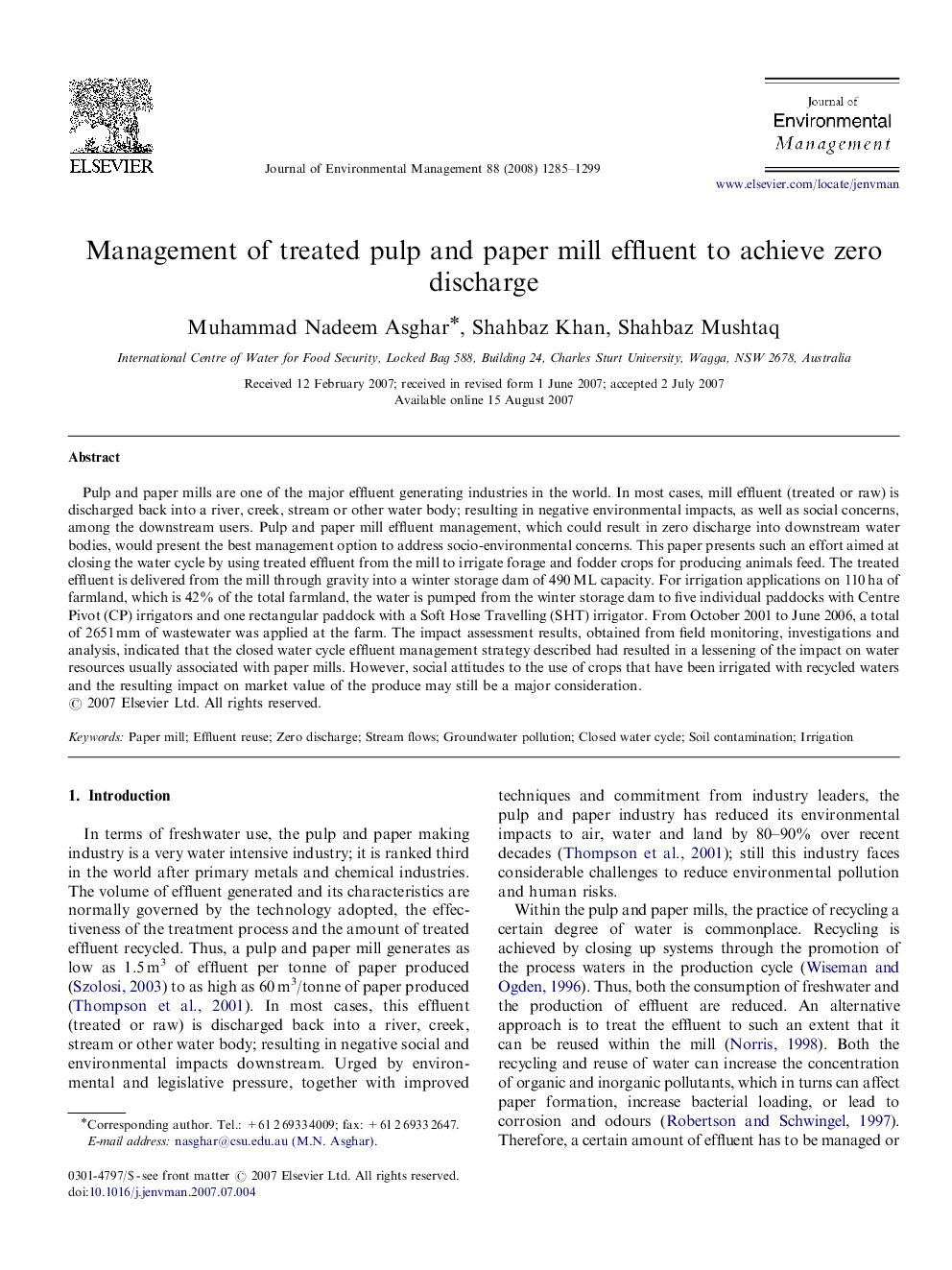| Article ID | Journal | Published Year | Pages | File Type |
|---|---|---|---|---|
| 1058323 | Journal of Environmental Management | 2008 | 15 Pages |
Pulp and paper mills are one of the major effluent generating industries in the world. In most cases, mill effluent (treated or raw) is discharged back into a river, creek, stream or other water body; resulting in negative environmental impacts, as well as social concerns, among the downstream users. Pulp and paper mill effluent management, which could result in zero discharge into downstream water bodies, would present the best management option to address socio-environmental concerns. This paper presents such an effort aimed at closing the water cycle by using treated effluent from the mill to irrigate forage and fodder crops for producing animals feed. The treated effluent is delivered from the mill through gravity into a winter storage dam of 490 ML capacity. For irrigation applications on 110 ha of farmland, which is 42% of the total farmland, the water is pumped from the winter storage dam to five individual paddocks with Centre Pivot (CP) irrigators and one rectangular paddock with a Soft Hose Travelling (SHT) irrigator. From October 2001 to June 2006, a total of 2651 mm of wastewater was applied at the farm. The impact assessment results, obtained from field monitoring, investigations and analysis, indicated that the closed water cycle effluent management strategy described had resulted in a lessening of the impact on water resources usually associated with paper mills. However, social attitudes to the use of crops that have been irrigated with recycled waters and the resulting impact on market value of the produce may still be a major consideration.
